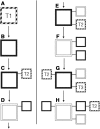Phenotypic Novelty in EvoDevo: The Distinction Between Continuous and Discontinuous Variation and Its Importance in Evolutionary Theory
- PMID: 27512237
- PMCID: PMC4960286
- DOI: 10.1007/s11692-016-9372-9
Phenotypic Novelty in EvoDevo: The Distinction Between Continuous and Discontinuous Variation and Its Importance in Evolutionary Theory
Abstract
The introduction of novel phenotypic structures is one of the most significant aspects of organismal evolution. Yet the concept of evolutionary novelty is used with drastically different connotations in various fields of research, and debate exists about whether novelties represent features that are distinct from standard forms of phenotypic variation. This article contrasts four separate uses for novelty in genetics, population genetics, morphology, and behavioral science, before establishing how novelties are used in evolutionary developmental biology (EvoDevo). In particular, it is detailed how an EvoDevo-specific research approach to novelty produces insight distinct from other fields, gives the concept explanatory power with predictive capacities, and brings new consequences to evolutionary theory. This includes the outlining of research strategies that draw attention to productive areas of inquiry, such as threshold dynamics in development. It is argued that an EvoDevo-based approach to novelty is inherently mechanistic, treats the phenotype as an agent with generative potential, and prompts a distinction between continuous and discontinuous variation in evolutionary theory.
Keywords: EvoDevo; Evolutionary theory; Innovation; Macroevolution; Phenotypic novelty.
Figures




Similar articles
-
The innovation triad: an EvoDevo agenda.J Exp Zool B Mol Dev Evol. 2005 Nov 15;304(6):487-503. doi: 10.1002/jez.b.21081. J Exp Zool B Mol Dev Evol. 2005. PMID: 16299770
-
What is evolutionary novelty? Process versus character based definitions.J Exp Zool B Mol Dev Evol. 2013 Sep;320(6):345-50. doi: 10.1002/jez.b.22508. Epub 2013 Jun 21. J Exp Zool B Mol Dev Evol. 2013. PMID: 23794420
-
Evolutionary developmental biology: its concepts and history with a focus on Russian and German contributions.Naturwissenschaften. 2010 Nov;97(11):951-69. doi: 10.1007/s00114-010-0720-9. Epub 2010 Sep 24. Naturwissenschaften. 2010. PMID: 20865238 Review.
-
A conceptual framework of evolutionary novelty and innovation.Biol Rev Camb Philos Soc. 2021 Feb;96(1):1-15. doi: 10.1111/brv.12643. Epub 2020 Aug 31. Biol Rev Camb Philos Soc. 2021. PMID: 32869437
-
Adaptation in flower form: a comparative evodevo approach.New Phytol. 2015 Apr;206(1):74-90. doi: 10.1111/nph.13198. Epub 2014 Dec 2. New Phytol. 2015. PMID: 25470511 Review.
Cited by
-
The cellular substrate of evolutionary novelty.Curr Biol. 2025 Jun 23;35(12):R626-R637. doi: 10.1016/j.cub.2025.04.014. Curr Biol. 2025. PMID: 40555192 Review.
-
Developmental finite element analysis of cichlid pharyngeal jaws: Quantifying the generation of a key innovation.PLoS One. 2018 Jan 10;13(1):e0189985. doi: 10.1371/journal.pone.0189985. eCollection 2018. PLoS One. 2018. PMID: 29320528 Free PMC article.
-
Why an extended evolutionary synthesis is necessary.Interface Focus. 2017 Oct 6;7(5):20170015. doi: 10.1098/rsfs.2017.0015. Epub 2017 Aug 18. Interface Focus. 2017. PMID: 28839929 Free PMC article. Review.
-
The Most Developmentally Truncated Fishes Show Extensive Hox Gene Loss and Miniaturized Genomes.Genome Biol Evol. 2018 Apr 1;10(4):1088-1103. doi: 10.1093/gbe/evy058. Genome Biol Evol. 2018. PMID: 29684203 Free PMC article.
-
The legacy and evolvability of Pere Alberch's ideas.Interface Focus. 2024 Oct 25;14(5):20240011. doi: 10.1098/rsfs.2024.0011. eCollection 2024 Oct 11. Interface Focus. 2024. PMID: 39464645 Free PMC article.
References
-
- Abella, J., Pérez-Ramos, A., Valenciano, A., Alba, D. M., Ercoli, M. D., Hontecillas, D., et al. (2015). Tracing the origin of the panda’s thumb. The Science of Nature, 102(5–6), 35. doi:10.1007/s00114-015-1286-3. - PubMed
-
- Altenberg L. Modularity in evolution: Some low-level questions. In: Callebaut W, Rasskin-Gutman D, editors. Modularity: Understanding the development and evolution of natural complex systems. Cambridge, MA: MIT Press; 2005. pp. 99–128.
LinkOut - more resources
Full Text Sources
Other Literature Sources
